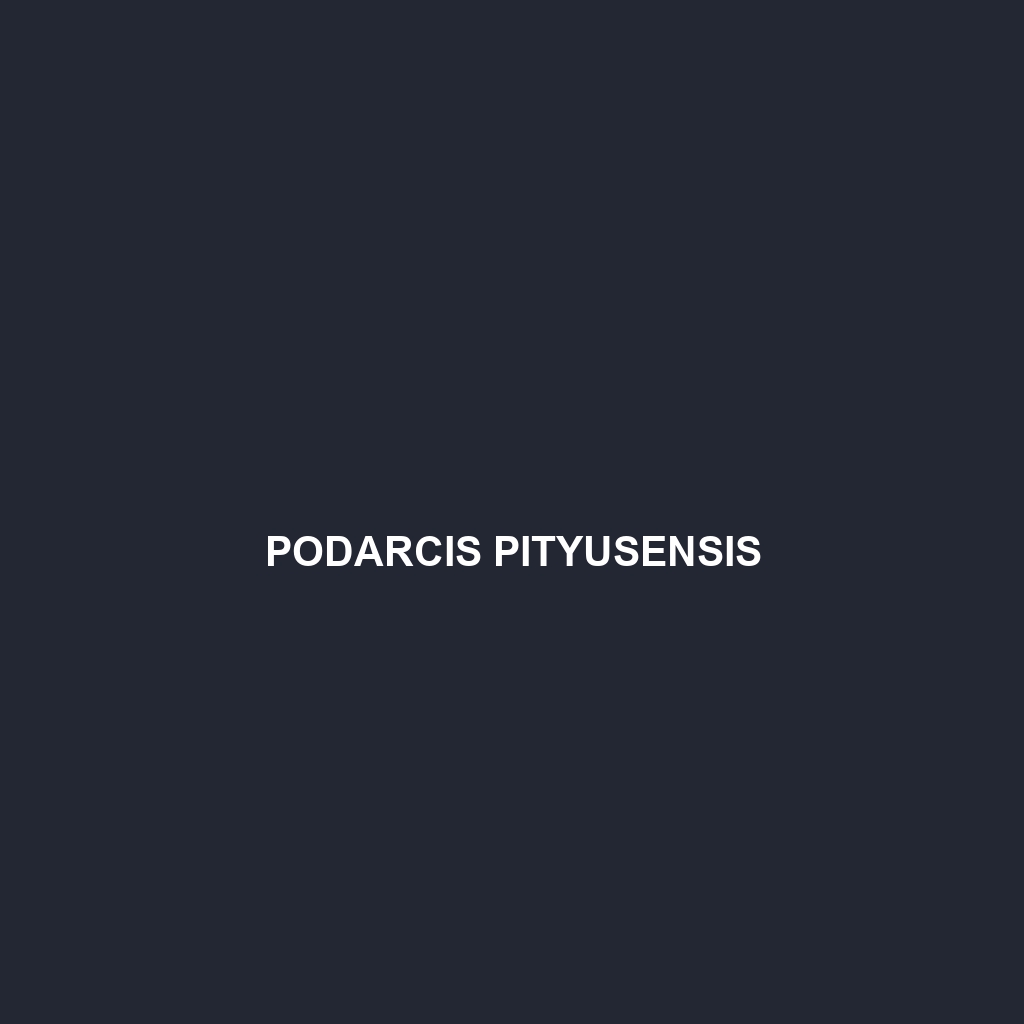Common Name
Podarcis pityusensis
Scientific Name
Podarcis pityusensis
Habitat
Podarcis pityusensis, commonly known as the Pityusic lizard, is primarily found in the Pityusic Islands, which are part of the Balearic Archipelago in the Mediterranean Sea. These islands, often characterized by their rugged terrain and coastal cliffs, provide the ideal habitat for this species. The climate in this region ranges from temperate to Mediterranean, with hot, dry summers and mild, wet winters. Podarcis pityusensis typically inhabits marine habitats, rocky outcrops, and shrubland environments. The availability of shelter from predators among the rocks and vegetation is crucial for their survival, making rocky and scrubby terrains their favored locales. Additionally, they can be found in areas of temperate forests where the underbrush provides adequate shelter and hunting grounds for prey.
Physical Characteristics
Podarcis pityusensis is a small lizard, averaging 15 to 20 centimeters in total length. They exhibit a streamlined body shape, which aids in their agility and speed as they navigate their rocky environments. The coloration of these lizards can vary significantly but generally includes shades of brown and gray with darker stripes or spots that help them blend into their surroundings. Males are typically more vividly colored compared to females, especially during the breeding season, when their hues can become more vibrant to attract mates. One unique feature of Podarcis pityusensis is their ability to lose their tails when threatened by predators, a defense mechanism known as autotomy. The tail may regenerate over time, although the new growth may differ in appearance from the original.
Behavior
This species displays predominantly diurnal behavior, meaning they are active during the day and often bask in the sun to regulate their body temperature. Podarcis pityusensis is known for its territorial nature, especially in males, which engage in displays of dominance that may include push-ups or head bobbing. These lizards are also territorial and will often defend their chosen basking spots against rivals. Social interactions are commonplace, particularly during the mating season, where males will exhibit courtship behaviors to attract females. Interestingly, these lizards display a tendency to be somewhat inquisitive and will often approach potential threats to assess whether they pose danger, rather than immediately fleeing.
Diet
Podarcis pityusensis is primarily insectivorous, feeding on a variety of small invertebrates, including insects and spiders. They may also consume plant matter, making them primarily omnivores in their diet. Their feeding patterns are opportunistic, and they predominantly hunt during the warmer parts of the day. When foraging, they will use quick, darting movements to catch prey, often waiting in ambush near natural shelters where insects are likely to appear.
Reproduction
The reproductive season for Podarcis pityusensis typically occurs in late spring to early summer. Males engage in courtship displays that can include elaborate head-bobbing and showing off their bright coloration. After mating, females will lay between 3 to 7 eggs in secluded, moist areas where the temperatures are optimal for incubation. The gestation period lasts about 8 to 10 weeks, after which the hatchlings emerge fully formed and are independent from birth. Parental care is limited, as the adults do not provide protection or nourishment to their young once they hatch. This leads to a high mortality rate among hatchlings, particularly in areas with abundant predators.
Conservation Status
Currently, Podarcis pityusensis is classified as Least Concern by the International Union for Conservation of Nature (IUCN), owing to its wide distribution and stable population numbers. However, habitat loss due to urban development and invasive species poses significant threats to their populations. Conservation efforts are vital to ensure that their natural habitats are preserved, and various initiatives are ongoing to protect their living environments within the Pityusic Islands.
Interesting Facts
One fascinating aspect of Podarcis pityusensis is their ability to change their skin color slightly according to their surroundings, an adaptive trait that helps with camouflage. Additionally, these lizards are known for their curious nature; they often investigate new sights and sounds within their territory rather than immediately fleeing, a behavior that sets them apart from many other lizard species.
Role in Ecosystem
Podarcis pityusensis plays a crucial role in its ecosystem as both a predator and prey. By controlling insect populations, they help maintain the balance of the food web. Additionally, as prey for various birds and small mammals, they contribute to the dietary needs of these predators. This interconnectedness within their Mediterranean habitat illustrates the importance of maintaining biodiversity and the health of ecosystems where Podarcis pityusensis resides.
